ngDoCheck
This is fired each time anything that can trigger change detection has fired (e.g. click handlers, http requests, route changes, etc…). This lifecycle hook is mostly used for debug purposes;
demonstrating when ngDoCheck is triggered.
You can see that ngDoCheck is called on the child component when the parent component is being checked. Now suppose we implement onPush strategy for the B component. How does the flow change? Let’s see:
Checking A component:
- update B input bindings
- call NgDoCheck on the B component
- update DOM interpolations for component A
if (bindings changed) -> checking B component:
- update C input bindings
- call NgDoCheck on the C component
- update DOM interpolations for component B
Checking C component:
- update DOM interpolations for component C
